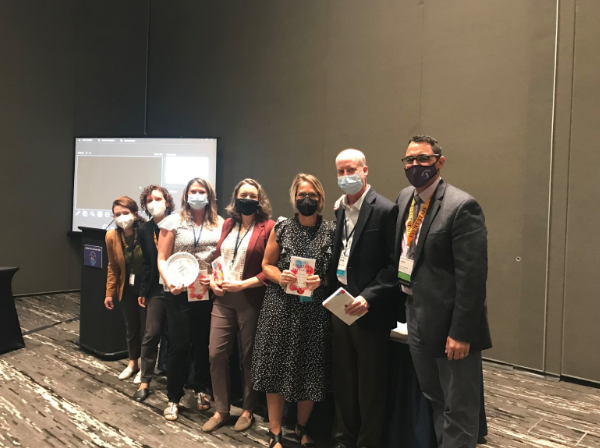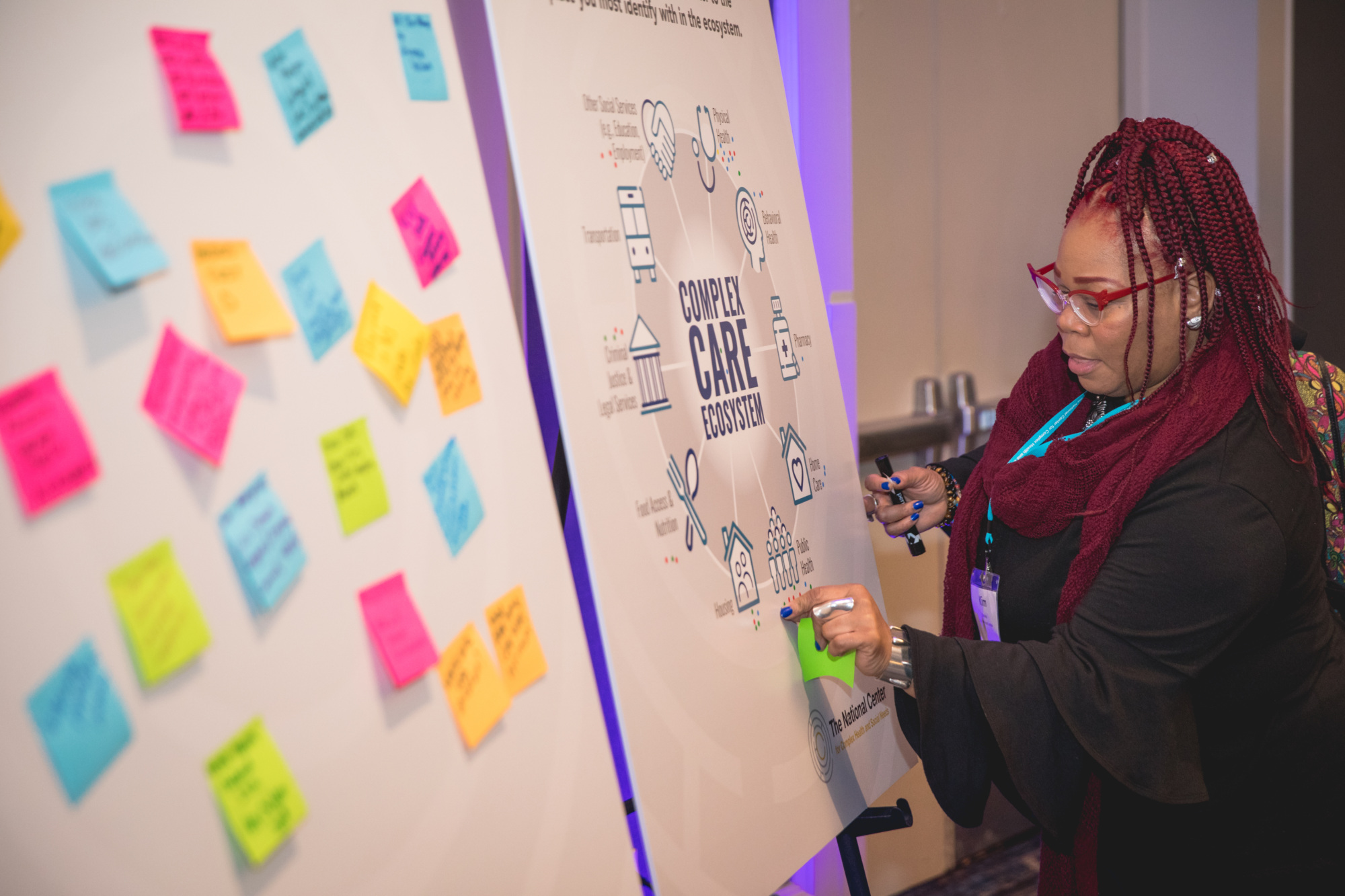Ecosystems 101
By Rebecca Koppel, Senior Program Manager for Field Building and Resources
Building the complex care field Strengthening ecosystems of care Quality improvement SDOH & health equity
Strengthening ecosystems of care Convening Funding & financing Workforce development
What do we mean when we talk about building ecosystems of care in our communities? Organizations working together to coordinate their services and fill in delivery gaps sounds great, but what does it look like in practice? What challenges do fledgling collaboratives come up against? How can they overcome those challenges to provide person-centered care?
Those are all questions we asked ourselves when we launched the Ecosystems Community Learning Collaborative with cross-sector collaboratives from five communities across the country. From spring 2021 through fall 2022, the groups received technical assistance and coaching from our National Center staff and met with each other regularly to share lessons, compare progress, and work collectively through challenges.
Each collaborative sought to build or strengthen their community’s ecosystem of care for a specific population of focus. Partnerships in Spartanburg, SC and York County, PA focused on bringing services together to support individuals involved in the criminal legal system. The team from San Diego, CA focused on improving the mental health of children with complex health and social needs and their families. A collaborative in Allegheny, PA focused on connecting unhoused individuals to behavioral healthcare. The learning collaborative was rounded out by Camden Coalition staff involved in our Pledge to Connect program, which focuses on bridging emergency departments with outpatient behavioral health.
This spring, we published case studies on the ecosystems of care being developed in each community. One common thread was the importance of thinking outside the box to build relationships that could successfully strengthen an ecosystem of care.
“As one person or one organization, it’s hard to just push at something as big as an ecosystem and hope that something happens,” Amy Evans from Community Action Recovery Diversion (CARD) told us for the York, PA case study. “Especially if a community is in really early stages, I advise finding champions from a couple of different sectors. People that get it and can pull levers and make things happen that you couldn’t if you were by yourself.”
Reaching out across silos can be daunting. Brook Henderson of AccessHealth Spartanburg told us that “Even though I’m a people person, I never envisioned myself approaching one of the head personnel at the Department of Corrections at the State of South Carolina and saying, ‘There is a problem, and we need to fix it.’ But my confidence has grown because it’s not about me. It’s about how I can help that next person and prevent them from going down a difficult path that’s unnecessary.”
Unsurprisingly, securing funding for ongoing collaboration was a common challenge for the groups participating in the learning collaborative. In their case studies, teams highlight practical tips that worked for securing sustainable funding and leadership support, from advocating to make some services Medicaid-eligible to regularly communicating the ecosystem work’s “big picture” impacts to stakeholders. The San Diego team noted that they regularly included one to two slides about their ecosystem in every presentation to executives, which helped them gain buy-in and support from leadership.
Teams also noticed that building partnerships across sectors began to have a snowball effect. In York, the relationship between the housing and behavioral health sectors that blossomed over the course of the learning collaborative carried over onto a new grant opportunity that supported care for a completely different population. In Camden, the Pledge to Connect initiative is expanding its partnerships to include new regional hospitals and behavioral health providers.
“We as healthcare providers, we like to fall back on tradition,” former Camden Coalition Program Manager Sharif Braxton told us. “But it’s those structures that set up the systems to not serve people well.”
Serving people well means creating new structures — workflows, payment models, shared decision-making — that are responsive to their needs. In fact, leaders and community members from the learning collaborative sites detailed broad dimensions of value created through their work, including the intrinsic benefits of collaboration, meaningful community engagement, diverse levels of outcomes and impact, and sustainable system-level changes.
Explore our ecosystems case studies to learn how communities are experiencing the challenges and successes of forging these new structures firsthand:
By Rebecca Koppel, Senior Program Manager for Field Building and Resources
Building the complex care field Strengthening ecosystems of care Quality improvement SDOH & health equity
Data analysis & integration Strengthening ecosystems of care Funding & financing Measurement & evaluation



